Do you want to have a beautiful garden but don’t have the time to constantly maintain it? If so, then you need to check out these low-maintenance garden border ideas! This guide will discuss some of the best ways to create a stunning garden border that doesn’t require a lot of upkeep. It will also answer some common questions about low-maintenance borders so that you can make the most informed decision possible. So, what are you waiting for? Start planning your dream garden today!
What is a Garden Border?
A garden border is a defined edge around the perimeter of a garden. Borders can be constructed in a variety of shapes and sizes, but they all serve the purpose of defining the area and providing structure to the landscape. Garden borders are typically made from wood, metal, or stone and may include decorative elements such as picket fences or trelliswork.
When installing a garden border, it is important to consider the size and shape of the area being bordered as well as its function. For instance, if the goal is to create a space for entertaining guests, then a larger border with more decorative elements may be necessary. On the other hand, if the main purpose of a border is to simply define the perimeter of a garden, then simpler and smaller borders are often sufficient. Furthermore, it is important to select materials that will hold up in all types of weather conditions and compliment any existing structures or furniture in the area.

Overall, garden borders can be an attractive addition to any outdoor space and provide many practical benefits. With careful consideration and planning, homeowners can design and install beautiful borders that add charm and sophistication to the landscape.
Seven plants for a low-maintenance border
Amelanchier lamarckii
This deciduous, spreading shrub grows to around 2.5m/8ft tall and wide, with clusters of white flowers in late April and May followed by edible, blue-black, or red berries in summer. The leaves turn orange and yellow in autumn before falling. Amelanchier lamarckii is perfect for the front of a border where it will provide structure all year round but won’t require much maintenance.
Bergenia cordifolia
This evergreen perennial produces large clumps of glossy green foliage that will remain attractive throughout the winter months. It has pinkish-red flowers in late winter and early spring which are a beautiful contrast against the dark foliage. Bergenia can also tolerate a range of conditions and will require very little maintenance to look its best.
Carex pendula
This graceful evergreen grass can be used as a ground cover plant or planted in containers around the garden. It forms arching tussocks of olive-green leaves that produce attractive flower spikes during springtime. Carex pendula requires minimal pruning and maintenance and look great when planted in mass.
Rosa ‘The Fairy’
This miniature shrub rose grows to just 1m/3ft tall with light pink, double flowers from late spring through to autumn. It is easy to look after and requires very little pruning or maintenance to keep it looking at its best. Rosa ‘The Fairy’ is perfect for planting along the front of a border where it will provide continuous flowering throughout the summer months.
Geranium psilostemon
This hardy perennial grows to around 1m/3ft tall and produces large, cup-shaped flowers in shades of blue, purple, and white from late spring until autumn. It is easy to grow and requires very little pruning or maintenance. Geranium psilostemon looks stunning planted in bold drifts at the back of a border for added structure throughout the year.
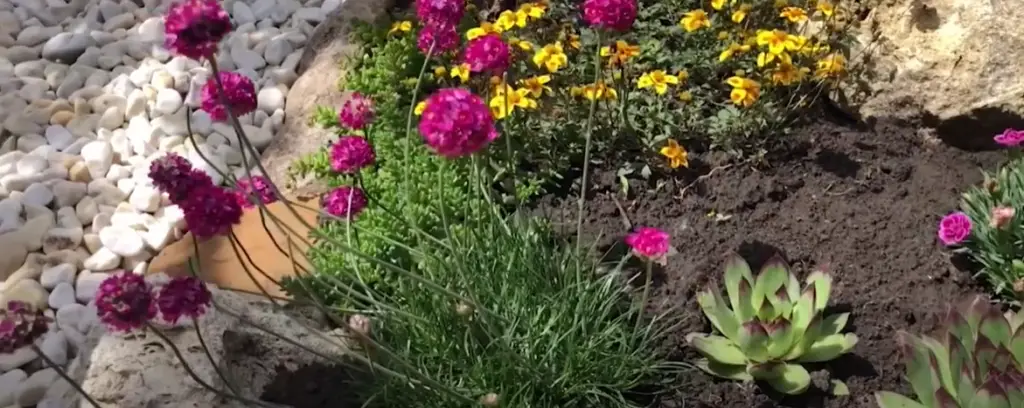
Hebe ‘Sutherlandii’
This evergreen shrub is a great choice for the front of a border where it will provide structure all year round. It produces green leaves with white edges and clusters of small, white flowers during summer. Hebe ‘Sutherlandii’ requires little maintenance and can be easily pruned back to shape as required.
Anemanthele lessioniana
This grassy, evergreen perennial grows to around 1m/3ft tall and produces graceful tussocks of yellow-green foliage that turn shades of orange and red in autumn. It requires minimal pruning or maintenance and can be used as a ground cover plant or planted in containers around the garden for added structure within the border.
Five steps to better garden borders
Make a plan
The most important part of creating beautiful and functional garden borders is to make a plan. Start by assessing your space, taking into account the width and height of the border you would like to create. Consider what types of plants or features you want in the border, such as trees, shrubs, perennials, or annuals. Also, think about what kind of maintenance you’re willing to do: Do you have time for pruning, weeding, and fertilizing? Once you have a clear idea of what you want to accomplish, it’s time to get started!
Prune your shrubs
It is important to prune your shrubs at least once a year, as it helps maintain their shape and encourages healthy growth. Pruning also helps with air circulation, which prevents disease and promotes flowering. Before you start pruning, make sure you know the proper way to do it. Different shrubs may require different methods of pruning so research what type of shrub you have and learn how best to care for it.
Prepare your soil
Before planting anything in your garden borders, you must prepare your soil properly. Clear away any weeds or debris, then test the soil to determine its pH level and nutrient levels. If necessary, add compost or fertilizer to adjust the pH and provide nutrients for your plants.
Choose your plants
Once you’ve identified the type of border you would like to create, it is time to choose what types of plants will work best in that space. Consider the climate and season as well as how much sun/shade each area gets throughout the day. You should also take into account how tall your shrubs should be to create a uniform look along your border.
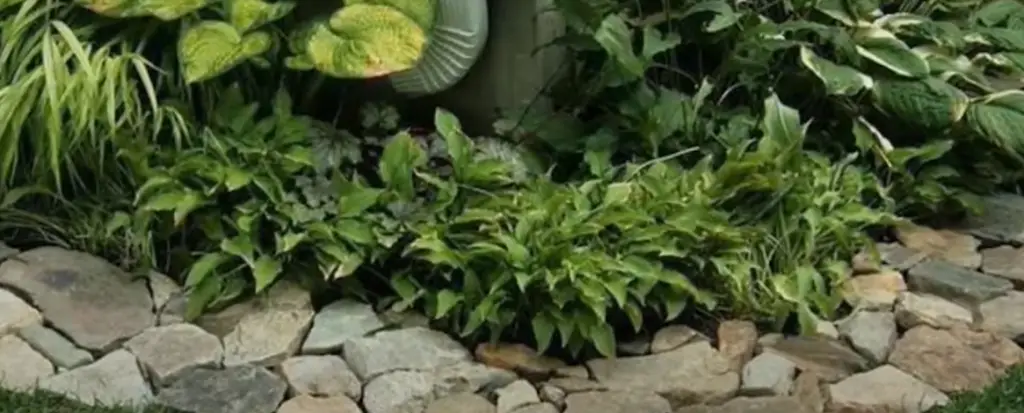
Rejuvenate your perennials
Perennials are plants that come back year after year, and they can be a great addition to any garden border. However, over time they can become overgrown or dry out in the summer months. To help your perennials look their best, prune them back every few years and add mulch for moisture retention. You may also need to divide perennial plants from time to time so that there is adequate space for healthy growth [1].
Low-maintenance garden border ideas
Follow the rule ‘right plant, right place’
The key to successful garden borders is finding the right plants for the space. Plants have different requirements for sunlight, water, and soil type, so it’s important to choose ones that suit your particular environment. Look for plants with similar needs and try to group them in a border or bed. If you choose low-maintenance varieties, such as native plants or perennials, they can thrive with minimal effort on your part.
Choose hardy evergreen shrubs
Evergreen shrubs provide year-round interest with their foliage and flowers but require little care once established. They’re also great for providing structure and acting as a backdrop for other seasonal plants. Perennial flowering shrubs like lilacs and viburnums look beautiful in spring and summer and will provide a great display for several years.
Mix it up with grasses
Grasses are versatile, ornamental plants that require little maintenance once established. They also come in a variety of shapes, sizes, and colors to suit all kinds of garden designs. Planting short varieties at the front of your border can help create depth and fill in any gaps around larger shrubs or trees.
Include some groundcovers
Groundcovers are low-growing plants that spread rapidly to form an attractive, dense carpet over large areas. Plants like vinca, sedum, mazes, and Thymus serpyllum are excellent choices as they can spread quickly and require little upkeep.
Include resilient plants
When creating a low-maintenance border, look for plants that can withstand different weather conditions. Hardy perennials such as lavender and daisies will come back each year with very little effort. Look for drought-tolerant varieties if you’re in an area prone to dry spells, or choose plants that thrive in the shade if your garden is mostly shaded.
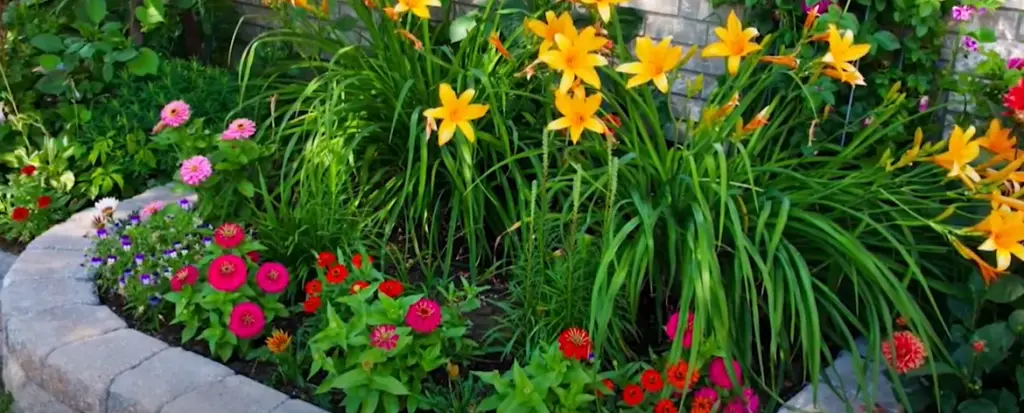
Use edging for tidy borders
Edging is a great way to create neat, tidy borders that will help keep your garden looking polished and well-maintained. There are lots of edging materials available to suit all budgets, including bricks, timber, or even recycled materials. Adding an edge can also make it easier to mow around the plants in your border.
Mulch the low-maintenance garden beds
Mulching is a great way to keep your garden beds looking neat and weed-free. Spread organic mulch, such as bark chips or wood shavings, over the top of the soil in your borders. This will suppress weeds, retain moisture, and help insulate your plants against extreme temperatures. It can also give your garden an attractive, finished look.
Add bulbs for seasonal interest
Bulbs are a great way to add seasonal interest and color to your garden without much effort. Plant them in the autumn, and they’ll come up year after year with minimal maintenance. Choose bulbs that flower at different times of the year for maximum impact.
Keep a hands-off approach
The key to a low-maintenance border is not to overdo it. Too much pruning, weeding, and fertilizing can be counterintuitive and can actually lead to more work in the long run. Instead, let your plants do their thing and enjoy the natural beauty of your garden without too much interference.
Use the no-dig method
The no-dig method is a great way to create low-maintenance borders without digging up your garden. Simply layer organic materials, such as straw or manure, on top of the soil and let nature do its work. This will improve the soil structure over time and help suppress weeds naturally. The technique is especially useful for small gardens or if you’re short on time.
Plant in gravel for low-maintenance gardening
If you’re looking for a truly hands-off approach, planting in gravel is a great way to go. Simply lay the gravel in your borders and plant tolerant plants such as succulents or cacti. This method requires no weeding or maintenance, and it can look really effective with the right choice of plants [2].
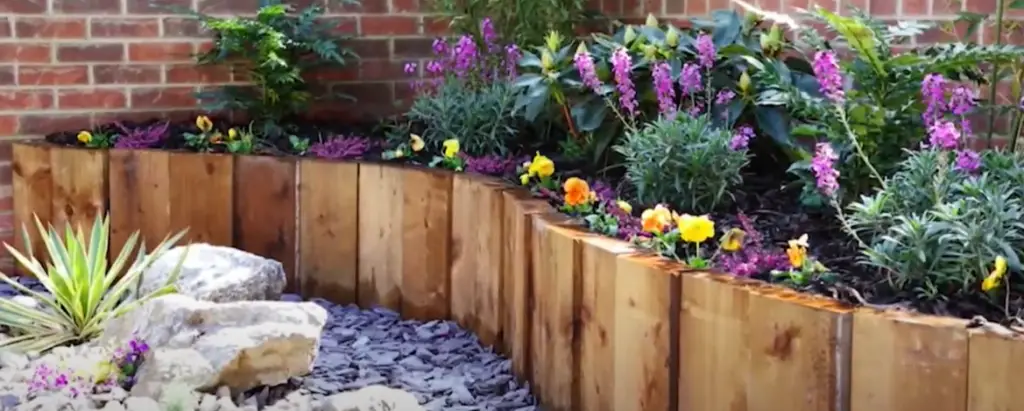
How do you make my garden borders low maintenance?
Making your garden borders low maintenance can be achieved in several ways. Here are some important steps to make great garden borders:
- Choose the right materials: when choosing materials for your garden borders, it’s important to choose those that are durable and require minimal maintenance over time. For example; gravel, paving stones, or brick pavers are all great choices as they can be easily swept away and don’t need any additional maintenance.
- Plant wisely: selecting the right plants for your garden borders is essential in ensuring they remain low-maintenance. Choosing hardy, native plants that require minimal attention such as lavender or grasses will ensure that you don’t need to spend a lot of time caring for them.
- Mulch: using mulch is a great way to reduce weed growth and maintain moisture levels in your soil without having to frequently water it. As an additional benefit, mulch also provides a decorative edge to your garden borders and helps keep them looking neat and tidy.
- Consider edging: adding a border around the edges of your garden beds is a great way to keep weeds away and maintain neat lines between plants. Edging materials such as steel, stone, or plastic strips are all good options that won’t require much upkeep over time.
- Keep it simple: when creating low-maintenance garden borders, less is often more! Stick with simple designs that don’t require too much maintenance and you’ll be able to enjoy your beautiful gardens without worrying about spending too much time on upkeep.
How to maintain garden borders?
Maintaining garden borders can be a simple and important task for ensuring your landscape is looking its best. Here are some tips on how to properly maintain garden borders:
- Regularly remove any weeds or other unwanted vegetation from the border to prevent them from spreading and taking over. Use a hoe or trowel to dig out the roots, being careful not to damage nearby plants in the process.
- Prune back any excess growth or dead wood to keep the border neat and tidy. This will help create a clean, manicured look that won’t detract from surrounding plants.
- Mulch around the perimeter of the border with organic material like bark chips, compost, or grass clippings. This will help suppress weeds and lock in moisture for the plants.
- Add fertilizer to the soil around the border regularly to ensure your plants are getting the nutrients they need. You can also add some compost or manure to improve drainage and aeration of the soil.
- Water your garden borders throughout the growing season, as needed, so that plants get adequate moisture and don’t become stressed during hot weather.
- Don’t forget to remove any debris or fallen leaves from the border, as this can harbor pests and disease if left unchecked. Taking regular care of your garden borders will make them look their best and keep your landscape looking beautiful year-round!
Optional: After completing the necessary maintenance, consider adding some decorative elements to your garden borders, such as plants or planters, to add visual interest. This will also help prevent weeds from taking over and make your garden look more attractive!
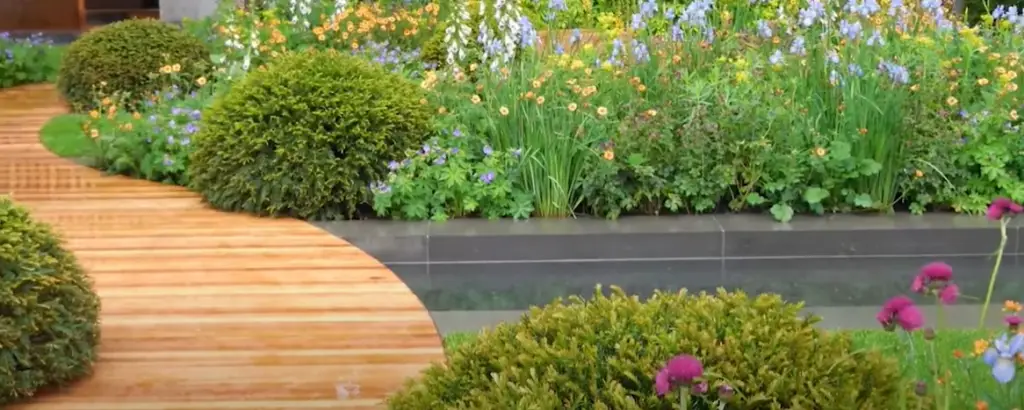
FAQ
What is the easiest low-maintenance garden border?
The easiest and lowest maintenance garden border would be to use edgings, such as plastic or metal edging. This type of edging is easy to install and maintain, and it helps create a tidy look in your garden without requiring much effort. Additionally, you can add ornamental stones or pavers along the edge of the edging for a more decorative look. However, if you want something even simpler and lower maintenance, ground cover plants are an ideal option. They provide beautiful texture and color while requiring minimal maintenance once established. You can also choose low-growing shrubs for a more formal look with less work required. Whichever option you choose, proper installation is essential for longevity and ease of maintenance.
What is best for garden borders?
The best choice for garden borders depends on your preferences and the look you are going for. Edgings, such as plastic or metal edging, provide a tidy and low-maintenance option. Ornamental stones and pavers can be used to add a more decorative look to the border. Ground cover plants are also great for creating texture and color with minimal effort once established. Low-growing shrubs are ideal if you want something more formal with less work required. Ultimately, it comes down to what kind of border works best with your garden design and how much maintenance you’re willing to put in.
How do I maintain my garden border?
Maintaining your garden border is relatively straightforward depending on the type of edging you choose. For plastic or metal edging, you should check for any signs of damage or warping and reposition the edging if necessary. If you have ornamental stones or pavers, make sure to clear away any debris and weeds that may be growing in between them. Ground cover plants will need occasional trimming to keep them looking neat and tidy. Low-growing shrubs will require pruning to maintain their shape and size. In all cases, proper installation is essential for longevity and ease of maintenance.
What are some tips for creating a garden border?
When creating a garden border, it’s important to do some planning beforehand so you know what type of edging, stones, plants, or shrubs to use. It’s also important to make sure you are choosing the right materials for your climate and soil type. Additionally, it’s helpful to create a cohesive look by repeating certain elements throughout your border. Lastly, proper installation is key for longevity and ease of maintenance, so make sure you know what you’re doing before beginning the project. With these tips in mind, creating a beautiful garden border will be easy!
How do you make a border in a small garden?
For a small garden, edgings such as plastic or metal are ideal because they don’t take up too much space. You can also use ornamental stones and pavers to create a more decorative look with minimal effort once installed. Ground cover plants are another great option for adding texture and color while still keeping the space looking tidy. Low-growing shrubs can be used for a more formal effect in smaller gardens as well. Ultimately, it’s important to choose materials that will work best with your specific climate and soil type, as well as install them properly for longevity and ease of maintenance.
How do I revive my garden border?
If your garden border is looking a bit tired, a few simple steps can help revive it. Start by checking for any signs of damage or warping in the edging and repositioning it if necessary. Clear away any debris and weeds that may be growing in between stones or pavers. Trim back any ground cover plants to keep them looking neat. Prune low-growing shrubs to maintain their shape and size. Lastly, check the soil around your border to make sure it’s healthy and getting enough water and nutrients.
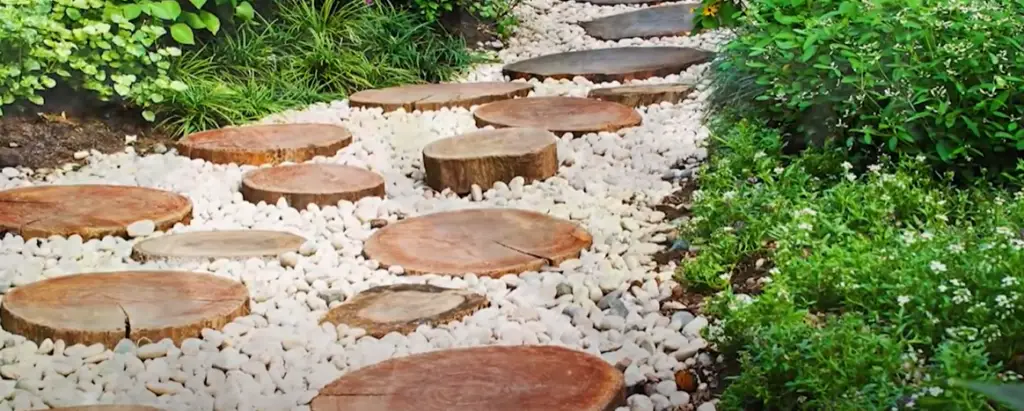
What is the best feed for garden borders?
The best feed for garden borders depends on the plants that you are growing. Generally speaking, a balanced fertilizer will be suitable for most plants found in garden borders. A slow-release fertilizer is great because it provides long-lasting nutrients to your plants over time. Organic fertilizers are also a good choice if you want to avoid chemical products. Be sure to read the instructions carefully and apply the correct amount of fertilizer at the right times for optimal results.
What do you put around garden borders?
When creating a garden border, there are a variety of materials that you can use. Edgings such as plastic or metal are great for outlining the shape of your border and helping to keep weeds away. Ornamental stones and pavers add texture and color while still keeping the space looking neat. Ground cover plants like ivy or creeping thyme can be used to fill in spaces between stones for a more natural look. Low-growing shrubs can also be used for a more formal effect if desired. Ultimately, it’s important to choose materials that will work best with your specific climate and soil type.
How do you line a garden border?
When lining a garden border, it’s important to do some planning beforehand so you know which type of edging, stones, plants, or shrubs to use. Make sure you are choosing materials that will work best with your specific climate and soil type. Additionally, it can be helpful to create a cohesive look by repeating certain elements throughout your border. Once you’ve chosen the materials for your border, proper installation is key for longevity and ease of maintenance – so make sure you know what you’re doing before beginning the project.
What is the cheapest edging material?
The cheapest edging material will depend on your specific needs and budget. Plastic edging is usually the most affordable option, but it may not be as durable or visually appealing as other materials. Wooden borders are also relatively inexpensive and can provide a more natural look. Other cheaper options include rubber edging, cobbles, or even recycled materials like tire treads or plastic bottles. Ultimately, it’s important to choose a material that will work best with your climate and soil type.
What is the cheapest way to fill borders?
The cheapest way to fill borders will depend on your budget and the type of look you’re going for. If you’re looking to save money, using ground cover plants like ivy or creeping thyme is an economical option. You can also use recycled materials such as plastic bottles, old tires, or broken pieces of ceramic tiles to create interesting shapes and textures. Ornamental stones and pebbles may also be a cost-effective way to add color and texture while still keeping the space looking neat. Ultimately, it’s important to choose materials that will work best with your specific climate and soil type.
Useful Video: Low Maintenance Garden Border Ideas
Conclusion
Low-Maintenance Garden Borders is an excellent choice for anyone looking to reduce the amount of time and effort they need to put into keeping their garden looking its best. Not only do they require minimal effort in terms of maintenance, but they also add structure and definition to your outdoor space. With a variety of materials available, you can find an option that complements the aesthetic of your garden while providing enough protection against weeds and other unwanted vegetation. Low-Maintenance Garden Borders allow you to enjoy the beauty of nature without having to invest too much into it!
References:
- https://www.gardenersworld.com/how-to/maintain-the-garden/five-steps-to-better-borders/
- https://www.homesandgardens.com/gardens/low-maintenance-garden-border-ideas





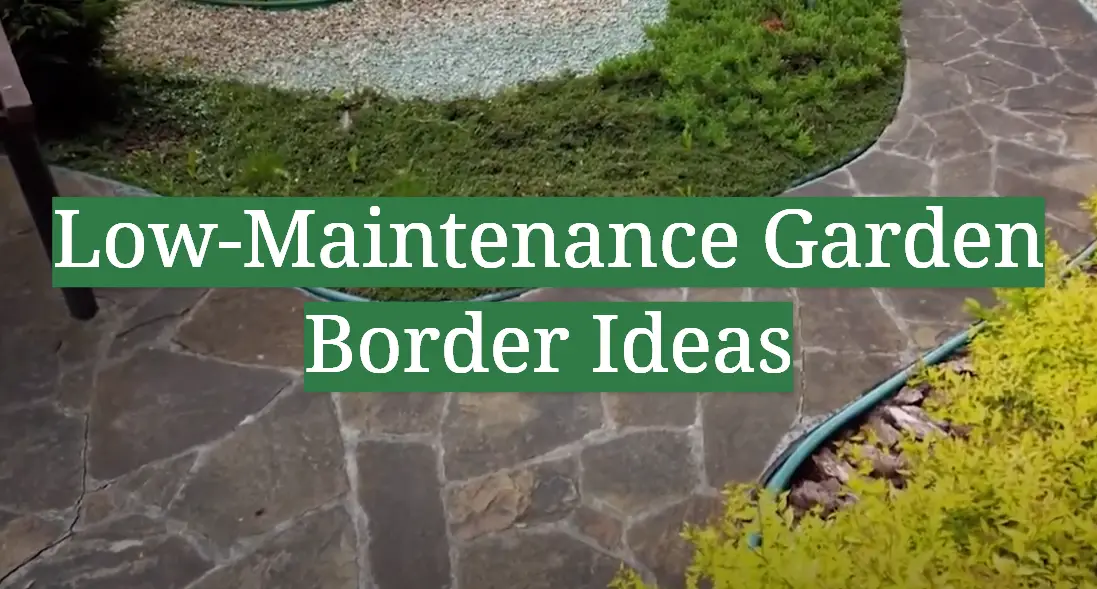




Leave a Reply
View Comments